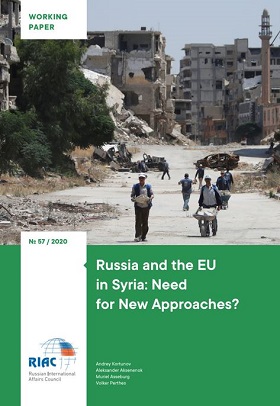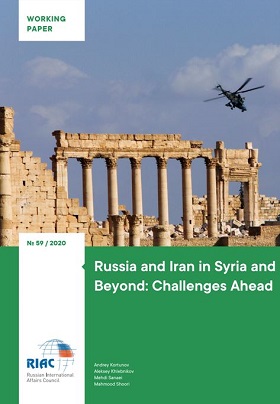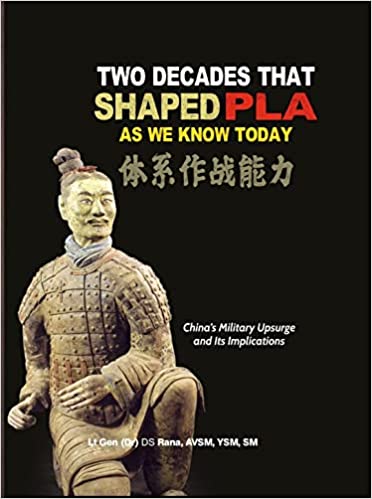Had I been told back then, in March 2011, that the civil war in Syria would still be raging ten years later, I would not have believed it. The mid-19th century American Civil War lasted four years; the 20th century civil wars in Russia and Spain stretched to five and three years, respectively. Not ten years, though! Yet, as we have seen a number of times, 21st century conflicts follow their own logic and dynamics: they can drag on for decades, alternatively flaring up and dying down, without ending in a decisive victory for either side. In this respect, the Syrian case is no exception—rather, yet another attestation to the rule already proven in Afghanistan, Somalia, Colombia, and many other places.
The sad anniversary of the tragic events of March 2011 is good reason to take preliminary stock of the Syrian conflict. Who are the winners and losers in the ten-year-long military confrontation?
The primary loser is Syria itself. As the Arabs say, “Egypt is the head of the Arab world, while Syria is its heart”. Taking this analogy further, we can say that the Syrian conflict was like a heart attack for the Arab world. About half a million dead. Over seven million refugees and displaced persons. The economy and the basic infrastructure almost totally destroyed. Syria was once one of the region’s most successful states but has now been transformed into a magnet for political extremists and international terrorists, into a universal fight cage for Iranians and Israelis, Turks and Kurds, Shiites and Sunnis, Russians and Americans.
The West is a loser, too. The attempts to effect a regime change in Damascus and maintain the liberal democratic sentiments amongst the Syrian opposition have proven equally unsuccessful. Ten years after the conflict broke out, the US maintains a largely symbolic military presence in Syria’s northeast regions, while the European Union is plainly unable to settle on a new strategy in Syria.
Should Russia be considered a winner? Tactically—yes. Russia’s successful and relatively low-budget military operation quickly made Moscow the principal external actor in Syria. As far as we can see, though, Moscow has failed to design any exit strategy over the five years of its immediate involvement in the Syrian conflict. The degree of Russia’s influence on the Damascus regime is also an open question.
Could Turkey be the principal beneficiary? Establishing buffer zones in Idlib and in Syria’s northern provinces is Erdogan’s unquestionable achievement. Yet to what degree is Ankara really in control of the situation in Idlib? This continuously festering abscess, right on Turkey’s border, could burst any moment and spill its contents into the neighbouring Turkish regions.
What kind of Syria would we like to see and might we see by March 2031?
The minimum goal is to prevent further escalation of the conflict, more casualties and greater destruction of the country. That will require the Astana process to be preserved just as well as reinvigorated, not because it is perfect but simply because the international community has nothing else.
The maximum goal is to motivate Damascus to initiate careful reforms, even if they remain purely economic so far. Conditions favorable to exerting the required pressure might emerge following the presidential elections in Syria this summer.
On 6 March 2011, the local security services in the small town of Daraa, southern Syria, detained fifteen teenagers painting anti-government graffiti on fences and buildings. During the subsequent interrogations, the teens were allegedly subjected to unjustifiably cruel treatment and even torture. Since all the detainees were born to prominent local families, their relatives and friends soon came to the police station to demand their release. The police were not ready to deal with street protests and opened fire on the crowd, shooting to kill; three people were killed on the spot and another died later of injuries. Next day, a mass rebellion against the central government broke out in Daraa to quickly spread to neighbouring towns and villages.
Had I been told back then, in March 2011, that the civil war in Syria would still be raging ten years later, I would not have believed it. The mid-19th century American Civil War lasted four years; the 20th century civil wars in Russia and Spain stretched to five and three years, respectively. Not ten years, though! Yet, as we have seen a number of times, 21st century conflicts follow their own logic and dynamics: they can drag on for decades, alternatively flaring up and dying down, without ending in a decisive victory for either side. In this respect, the Syrian case is no exception—rather, yet another attestation to the rule already proven in Afghanistan, Somalia, Colombia, and many other places.
What would have happened to Syria had the political opposition, back in March 2011, succeeded in quickly overthrowing President Assad’s regime and destroying the “top-down structures” of the ruling Alawi clans in Damascus? Had Barack Obama gone the whole nine yards and warranted a massive US military intervention? Had Vladimir Putin remained neutral? Would Syria have been something like Tunisia, a country conventionally regarded as epitomizing a successful transition from authoritarianism to democracy in the Arab world? Or would Syria have been in the throes of Libya’s fate which, following Gaddafi’s overthrow, is hopelessly mired in an endless civil war and has effectively lost its statehood?
We shall never have unequivocal answers to these questions. Picturing Syria’s successful transition from authoritarianism to democracy in 2011 requires a great stretch of the imagination, especially given the country’s ethnic and religious heterogeneity and the scale of the problems accumulated by that time. Assad’s overthrow would most likely have resulted in Syria becoming not a second Libya but a second Iraq, which, for nearly two decades, has been trying to recover from the consequences of the “liberating” intervention undertaken by the US and its allies in 2003.
Nonetheless, the sad anniversary of the tragic events of March 2011 is good reason to take preliminary stock of the Syrian conflict. Who are the winners and losers in the ten-year-long military confrontation?
The primary loser is Syria itself. As the Arabs say, “Egypt is the head of the Arab world, while Syria is its heart”. Taking this analogy further, we can say that the Syrian conflict was like a heart attack for the Arab world. About half a million dead. Over seven million refugees and displaced persons. The economy and the basic infrastructure almost totally destroyed. Syria was once one of the region’s most successful states but has now been transformed into a magnet for political extremists and international terrorists, into a universal fight cage for Iranians and Israelis, Turks and Kurds, Shiites and Sunnis, Russians and Americans.
The West is a loser, too. The attempts to effect a regime change in Damascus and maintain the liberal democratic sentiments amongst the Syrian opposition have proven equally unsuccessful. The regime has withstood military pressure and economic sanctions, isolation within the Arab world and condemnation by the international community. As years go by, the opposition, on the other hand, has drawn increasingly closer to Islamist radicals, who have nothing in common with the Western values. Ten years after the conflict broke out, the US maintains a largely symbolic military presence in Syria’s northeast regions, while the European Union is plainly unable to settle on a new strategy in Syria.
Should Russia be considered a winner? Tactically—yes. Russia’s successful and relatively low-budget military operation quickly made Moscow the principal external actor in Syria. As far as we can see, though, Moscow has failed to design any exit strategy over the five years of its immediate involvement in the Syrian conflict. The degree of Russia’s influence on the Damascus regime is also an open question. Is the dog wagging the tail or is the tail wagging the dog?
Could Turkey be the principal beneficiary? Establishing buffer zones in Idlib and in Syria’s northern provinces is Erdogan’s unquestionable achievement. Yet to what degree is Ankara really in control of the situation in Idlib? This continuously festering abscess, right on Turkey’s border, could burst any moment and spill its contents into the neighbouring Turkish regions.
There may well be more grounds for declaring the Islamic Republic of Iran the winner. Iran has a strategic long-term presence in Syria and, during the war, this has been elevated to a whole new level. There is now a corridor linking Iran with Lebanon and with the Mediterranean Sea; Iran’s ability to support Hezbollah and put pressure on Israel has expanded. Yet, no Iranian presence in Syria will change the obvious fact that the latter remains a mostly Sunni state where the Shiite Iran will have essentially restricted opportunities.
The past ten years have not brought Syria the long-awaited peace. What should we expect from the next ten years? What kind of Syria would we like to see and might we see by March 2031?
Let us start with what is most likely not going to happen in the foreseeable future.
First, given the impasses in Idlib and the Kurdish north-east (never mind the Golan Heights annexed by Israel), Syria’s territorial integrity will hardly be restored. This certainly does not mean that the issue of Syria’s territorial integrity is off the table. No matter how the events unfold, Syria’s ultimate partitioning must be prevented. This would have unpredictable, yet highly negative consequences for Syria’s neighbours in particular and for the Middle East in general.
Second, the seven million refugees and displaced persons will not all return. A significant proportion of them will remain where they currently live, in the Middle East and Europe. Before our very eyes, a new diaspora is emerging, comparable to that of Palestinian refugees. It will certainly have a major influence on political life in the Middle East, hampering the process of re-integrating Syria.
Third, no large-scale Syrian reconstruction plan worth USD 100–200 bn will be implemented. Given the pandemic and the economic crisis that has not been fully overcome by far, neither Europe nor the Gulf have the requisite financial resources. The financial status of potential donors is likely to deteriorate further; additionally, they will have new priorities (such as facilitating reconstruction in Yemen). No golden rain will fall on Damascus even if Mr Assad disappears from the political arena.
Fourth, the Assad regime will continue to demonstrate survival miracles against the backdrop of mounting economic problems, new sanctions and a continuing power struggle in Damascus itself. Hopes for a breakthrough or even progress in Geneva are slim; the Syrian regime feels quite confident and does not deem it necessary to make concessions to the opposition and the West, which is behind the Syrian opposition. It is quite possible that the regime will subsist fairly unchanged even after Assad leaves the stage.
If that is so, Syria has two goals for the near future.
The minimum goal is to prevent further escalation of the conflict, more casualties and greater destruction of the country. That will require the Astana process to be preserved just as well as reinvigorated, not because it is perfect but simply because the international community has nothing else. Preserving the status quo does not sound too impressive but a mediocre peace is, in any case, better than a glorious war.
The maximum goal is to motivate Damascus to initiate careful reforms, even if they remain purely economic so far. After all, Moscow and Tehran are equally interested in cutting the costs of their Syrian presence, which is impossible without improving the efficiency of the Syrian economy, without consistently countering corruption, without restructuring Syria’s judicial system. Conditions favorable to exerting the required pressure might emerge following the presidential elections in Syria this summer.
Economic reforms may be followed by controlled political liberalization or at least by consistent countering of particularly egregious outrages committed by Syria’s security forces. In turn, the West could additionally incentivize Damascus by making its economic sanctions against Syria more flexible.
First published in Global Brief.






